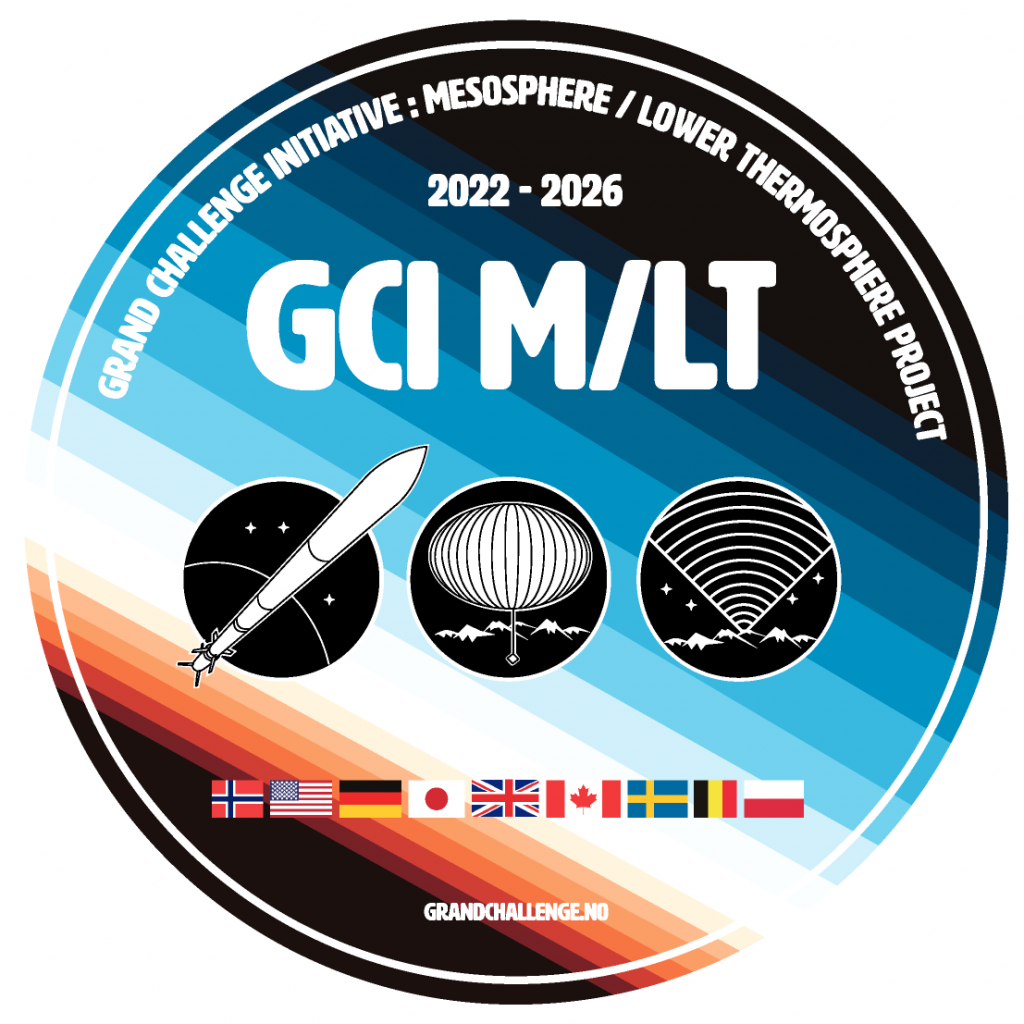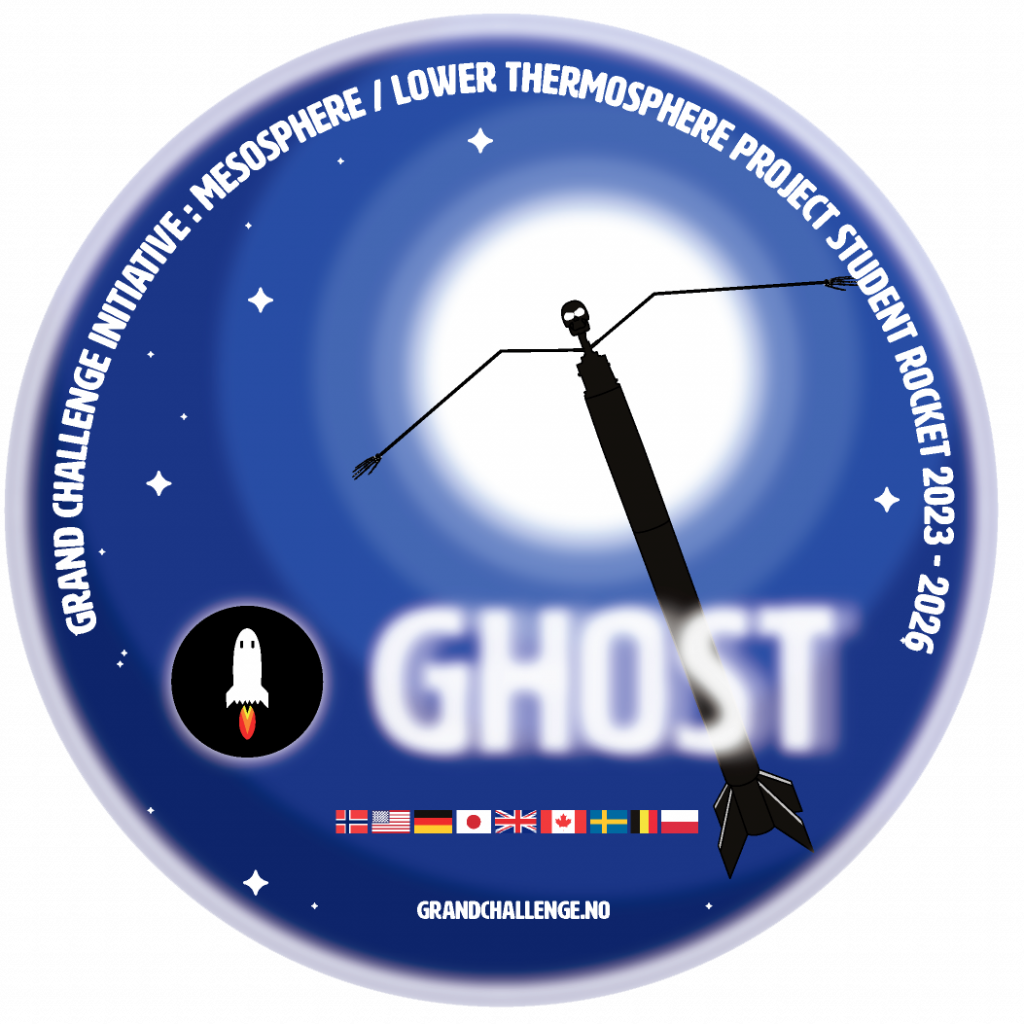The proposed Project Mesosphere / Lower Thermosphere (M/LT) aims to study the M/LT region with both new and well proven techniques using a multitude of plattforms and instruments. Recent theoretical and modelling developments allow for study of dynamic processes on a large range of scales – including the potential impact of small scale processes on a global scale.

Why Grand Challenge Initiative – M/LT (2022-2026)?
In the past there have been various activities at several institutes to study the middle atmosphere (more precisely the mesosphere and lower thermosphere, MLT) with sounding rockets. There have been some coordinated efforts to study dynamical processes (e. g., gravity waves) by a combination of sounding rockets and ground-based instrumentation.
Examples: NASA Mountain Waves Ascending VErtically (MacWAVE), and NASA Mesosphere-Lower Thermosphere Turbulence Experiment (M-TEX), DLR-Space Agency-funded WADIS: Wave propagation and dissipation in the middle atmosphere.
However, in most cases these programs involved a limited group of scientists. Obviously, in situ measurements are commonly accompanied by appropriate ground-based observations by, e. g., lidars and radars. However, there has so far not been any attempt to combine airborne remote sensing of the middle atmosphere with rocket borne in-situ measurements. Since airborne platforms have recently been established as a powerful means to study the middle atmosphere and lower thermosphere (e.g., NSF DEEPWAVE, and German GW-LCYCLE and SOUTHTRAC-projects), the combination of both approaches appears as a logical next step.
A coordinated effort for scientific application of all (or at least of several of the) available established research platforms for investigating the middle atmosphere and lower atmosphere, including (and spearheaded by) sounding rockets, is timely, because all of them have now matured to a state that synergistic use of them promises a large step forward. For all these platforms, an impressive suite of new instrumental techniques has been developed in recent years (see below).
Furthermore, recent theoretical and modeling developments allow us to study dynamical processes on a large range of scales, including the potential impact of small-scale processes on global scales, an ability that appeared inconceivable over many years in the past The aim of this white paper is to coordinate future activities to study the physics and chemistry of the MLT, on an international level with special emphasis on 4D nature of atmospheric dynamics (from large to very small scales; including , Gravity Wave generation, propagation and dissipation as well as its interaction with and forcing of the mean flow) and on composition (ions, neutrals, and aerosols), at low, middle and high latitudes (research interests determines latitude). The overall strategic aim of GCI-M/LT is to expand and coordinate our science aims regarding the Middle Atmosphere-Lower Thermosphere for the next decade. It is an open initiative, e. g. interested groups or scientists are invited to join, provided their science topic is related to the overall aims of GCI M/LT highlighted the below white paper currently under development:
Student Science:
GCI-M/LT, and for that matter GCI-Cusp, requires scientists, engineers, and technicians to achieve the discoveries these campaigns set out to accomplish. Training new scientists, engineers, and technicians to enable future campaigns is a goal for GCI-M/LT campaign. Like GCI-Cusp, GCI-M/LT will have a science mission that will involve college and university students from partnering institutions and countries on a dedicated sounding rocket flight for students. These students will have the opportunity to learn, experience, contribute their own individual but similar science missions to the overall GCI-M/LT campaign.

This student mission is called GHOST, which stands for “Grand Challenge Initiative: M/LT Student Rocket” and will be based on the successful student mission for GCI CUSP called G-CHASER. Over 100 students from seven teams from Norway, Japan, and the USA participated in the G-CHASER program the culminated in a launch from Andøya Space Center (ASC) in Norway on January 13, 2019. Each student team developed their own science mission complimentary the overall GCI-Cusp campaign over a period of 18 months. Each experiment was designed, built, and tested to a set of specific requirements defined in the G-CHASER User’s Guide.
All experiments were verified at NASA’s Wallops Flight Facility in August 2018 and re-verified at ASC in January 2019. G-CHASER flew on a Terrier Improved Malemute with telemetry and power for the experiments. Both GHOST and G-CHASER are based on the Colorado Space Grant Consortium’s RockSat-C and RockSat-X programs which have launched 20 student sounding rockets at WFF since 2008 engaging over 12,000 students and faculty over 200 experiments.
GHOST will be launched November 12th 2025 from Andøya Space, as part of the larger NASA Lessard RENU-3 campaign.
Apart of these dedicated student activities, every scientific project involves PhD work of several students.
Current status GCI M/LT projects (July 7th 2025):
SpEED Demon*, a tech demo mission for SEED (Barjatya/Embry-Riddle) (launched Aug. 23rd, 2022 from NASA Wallops Flight Facility in Virginia)XENON(Isotopic consentration of Xenon −Launched from Esrange in August 2021.SEED*(Sporadic E Electrodynamics) (Barjatya/Embry-Riddle): −from Kwajalein Atoll ~2024 −PI Aroh Barjatya has more info at sail.erau.edu/seed
The first rocket of the SEED mission launched on Friday, June 20, at 8:27 p.m. Marshall Islands Time (MHT)
The second rocket of the SEED mission launched on Saturday, June 28, at 8:11 p.m. Marshall Islands Time (MHT)
NASA Launching Rockets Into Radio-Disrupting Clouds – NASA SciencePMWE 3 & 4(IAP, DLR Moraba) −Incl2 Vipersafter the main rockets (same day) −Launched from Andøya Space, Oct 1st 2021VortEx*(Lehmacher) −February 2023, 2 rockets, and Nov. 2024, 2 rockets from Andøya Space
2 rockets launched March 22nd 2023
2 rockets launched Nov 10, at 21:36:00 UTC and 21:38:00 UTC
NASA VortEx 2 launches a success – Andoya SpaceILOT ILR-33 AMBER 2K– launced July 3rd 2024 from Andøya SpaceORIGIN*(Gumbel/MISU/Sweden) – •Feb. 2025 from ESRANGEMaxiDusty-2*(Mann/UiT/Norway) (summer 2025 from Andøya Space)
Launched July 5th, 2025, at 08:00 local time from Andøya Space
Successful launch of MaxiDusty-2 – Andoya Space- GHOST* (Grand Challenge Mesosphere Student Rocket) (Nov 12th 2025) (NASA/Andøya Space)
- ICI-5b* (4DSpace/DAEDALUS) (Miloch/UiO/Norway) (winter 2025-2026 from Andøya Space)
- DEFINE* (Strelnikov/IAP/Germany) – launch winter 2026 from Andøya Space (same time as ORIGIN)
ALOMAR Observatory measurements during ORIGIN & DEFINE - Turb3D (Strelnikov/Lubken/IAP/Germany)
SYSTER(IRF, Sweden) &BROR*(2023) (Ivchencko/KTH/Sweden)- ROMARA (Stude/DLR/Germany)
- B-SoLiTARe* “Balloon Sodium Lidar to measure Tides in the Antarctic Region” (Janches, GSFC/NASA)
*= funded or partly fundedstriked through = launched

